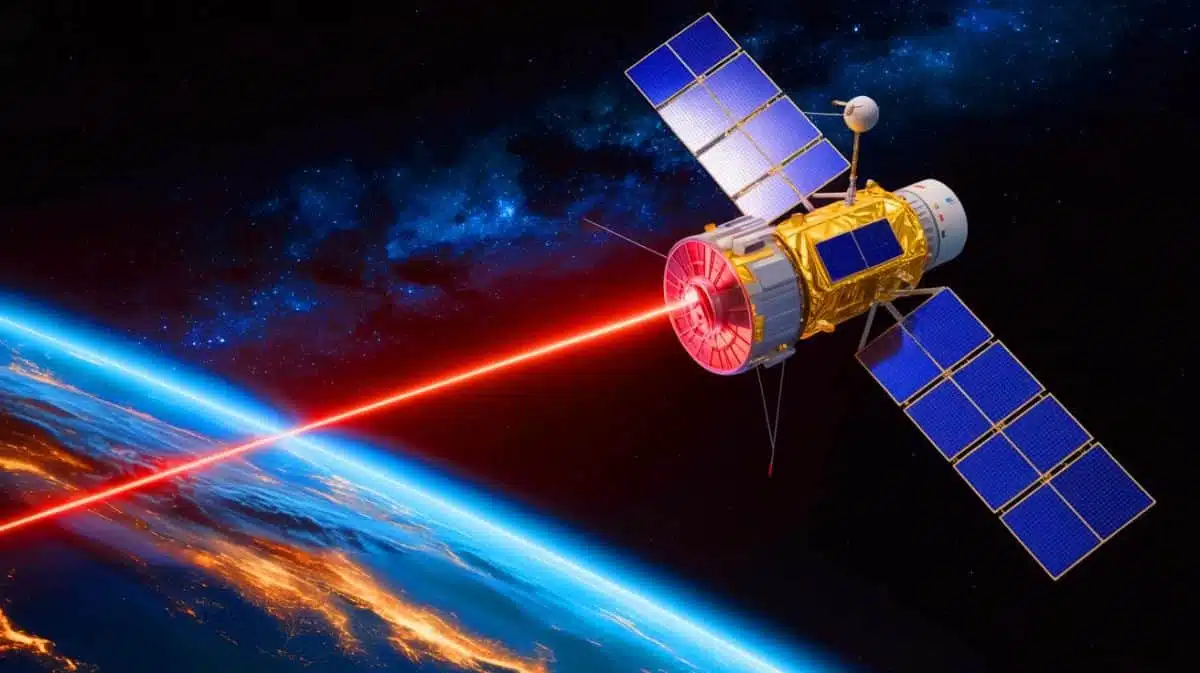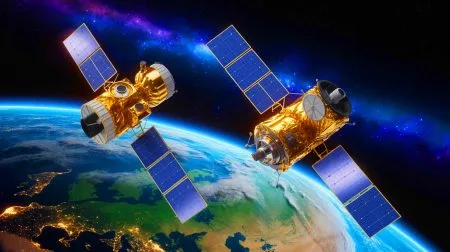| IN A NUTSHELL |
|
Recent advancements in satellite communication have taken a giant leap forward as Chinese scientists claim to have achieved a groundbreaking data transmission rate of 1 Gigabit per second (Gbps) from a geostationary satellite to Earth using a mere 2-watt laser. This development has not only set new benchmarks but also surpassed the capabilities of existing technologies like SpaceX’s Starlink. Starlink, which operates at an altitude of 341 miles above Earth, typically offers speeds reaching only a few Mbps. The key to this technological feat lies in overcoming the challenge of atmospheric turbulence that has long been a barrier in satellite laser communications.
Understanding the AO-MDR Synergy Method
The crux of this innovation is the novel AO-MDR synergy method, developed to enhance the quality of satellite laser communications. Traditional approaches often relied on either Adaptive Optics (AO) or Mode Diversity Reception (MDR) individually. However, these methods alone were insufficient in maintaining communication quality under low signal power conditions. The AO-MDR synergy method effectively combines both techniques to address this issue. AO works by sharpening distorted light, while MDR captures scattered signals, together ensuring a stable and reliable transmission.
Testing of this groundbreaking method took place at the Lijiang observatory in southwest China. Utilizing a 5.9-foot telescope, the researchers focused on a satellite orbiting 22,807 miles from Earth’s surface. This telescope is equipped with an advanced system of 357 micro-mirrors that actively reshape incoming laser light distorted by atmospheric interference, ensuring that the data extracted is as reliable as possible.
Breaking Down the Transmission Process
The intricate process of transmission begins with the corrected light being channeled through a multi-mode fiber. This fiber then splits the light into eight base-mode channels using a multi-plane converter (MPLC). To ensure the quality of the data, a sophisticated “path-picking” algorithm is employed. This algorithm evaluates the signal strength of each channel in real-time and selects the three most robust and coherent signals. This meticulous selection process allows for a significant increase in signal strength, which has been validated through multiple experimental verifications.
The researchers meticulously documented their findings, ensuring that the enhanced signal strength was not a one-off occurrence but a consistently repeatable outcome. This reliability is crucial for the practical application of this technology in real-world scenarios, where consistent data transmission rates are essential.
The Implications of High-Orbit Laser Communication
The implications of this technological breakthrough are vast, especially in an era where high-speed internet connectivity is becoming increasingly essential. The ability to transmit data at 1 Gbps could revolutionize the way we access and share information, particularly in remote areas where traditional internet infrastructure is lacking. Moreover, surpassing Starlink’s capabilities not only puts China at the forefront of satellite communication technology but also poses a challenge to existing satellite internet service providers to innovate further.
With this new method, the potential for expanding internet coverage to underserved regions is immense. This could lead to significant economic and educational advancements, as access to information becomes more equitable. The competition it introduces in the satellite internet market also promises to drive down costs and improve service quality for consumers globally.
The Future of Satellite Communication
As this technology continues to evolve, the future of satellite communication looks promising. Researchers are optimistic about further refining the AO-MDR synergy method to achieve even higher data transmission rates with lower power consumption. The continuous improvement of this technology could pave the way for more secure and efficient communication systems, essential in today’s data-driven world.
Moreover, the collaboration between academia and industry, as demonstrated by the joint efforts of Peking University of Posts and Telecommunications and the Chinese Academy of Sciences, highlights the importance of interdisciplinary research in achieving technological breakthroughs. As we move forward, the question remains: How will this advancement redefine global communication standards and who will rise to meet the challenge?
Did you like it? 4.5/5 (23)









Wow, 1 Gbps from a geostationary satellite?! That’s mind-blowing! 🚀
How does this new tech compare to existing satellite broadband services in terms of cost?
Will this technology be available globally, or is it just a Chinese initiative?
I’m curious about the environmental impact of using lasers in space communications. 🌍
Is it just me, or does this sound like something straight out of a sci-fi movie? 😄
What are the implications for national security with this kind of tech in space?
Why aren’t more countries investing in laser tech for communications?
Thanks for the article, but I’m still sticking with my Starlink for now! 👍
Does this mean faster internet for rural areas? That would be amazing! 🎉